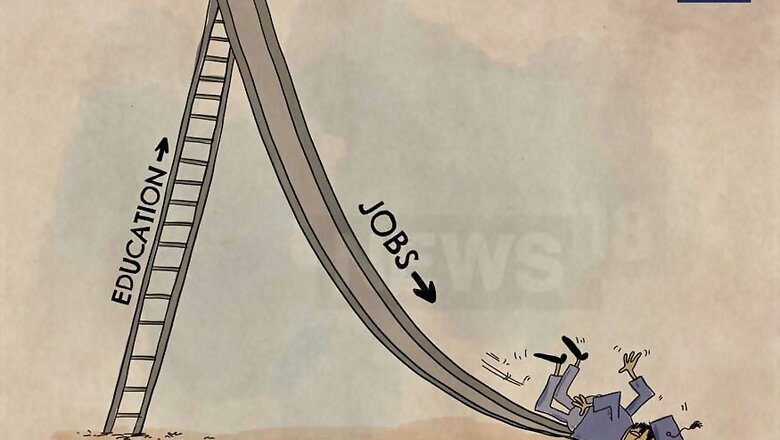
views
New Delhi: That India is experiencing jobless growth is worrying—well, that’s old news. What’s more alarming is the fact that those who are employed continue to suffer from dangerous and demeaning jobs.
According to the 2018 United Nations Human Development Report (UNHDR), some 77.5 per cent workers in India are under vulnerable employment. This data is way higher than the global average of 42.5 per cent; and if you were to rank India as per this metrics, the country with 51.9 per cent employment to population ratio would hit almost the bottom deck at 180 in a list of 189 countries.
The International Labour Organization’s (ILO) World Employment and Social Outlook report published earlier in January this year predicted that of the 535 million labour force in India in 2019, some 398.6 million would have poor quality jobs.
An estimated 1.4 billion workers were found to be living in vulnerable employment globally in 2017, the report mentioned, and an additional 17 million are expected to join the ranks per year in 2018 and 2019.
Vulnerable employment is often characterised by inadequate earnings, low productivity and difficult conditions of work that undermine workers’ fundamental rights. The United Nations defines it as the sum of the employment status groups of own account workers and contributing family workers. They are less likely to have formal work arrangements, and are therefore more likely to be subjected to indecent working conditions and lack basic social security.
The report notes that "while there has been strong job creation in some ICT-intensive services, notably in India, a significant portion of the jobs created in the services sector over the past couple of decades have been in traditional low value-added services, where informality and vulnerable forms of employment are often dominant."
In general, the incidence of vulnerable employment is highest in the agriculture sector, which employs more than 50 per cent of the total workforce in India. It is followed up by the manufacturing sector, where another 30 million workers suffer from long hours and improper wages.
“The (Central) government should implement the Maharashtra (Rural) Employment Guarantee Scheme all throughout the country and increase public sector expenditure in all areas, more importantly in education and health care, to address this problem," distinguished political economist Amiya Kumar Bagchi said.
The Mahatma Gandhi National Rural Employment Guarantee Act (MGNREGA) gives the legal guarantee of hundred days of wage employment to adult members of a rural household who demand employment and are willing to do unskilled manual work. The Employment Guarantee Scheme in Maharashtra, on the other hand, provides wage employment “throughout the year to every adult person who volunteers to do unskilled manual work".
It is concerning that while the overall unemployment rate in India hovers between 3.4 per cent to 3.5 per cent between 2017-19, the unemployment rate in youths (15-24 age group)—comprising 28 per cent of the total population—is predicted to increase further from 10 per cent in 2014 to 10.7 per cent in 2019.
What’s even more worrying is that female labour participation rate in India stands at 27.2 per cent as against 78.8 per cent than that of male—a difference of 51.6 per cent—the UNHDR report found. It ranked India 12th on the list of 20 countries with the widest difference in male and female labour force participation rates.




















Comments
0 comment